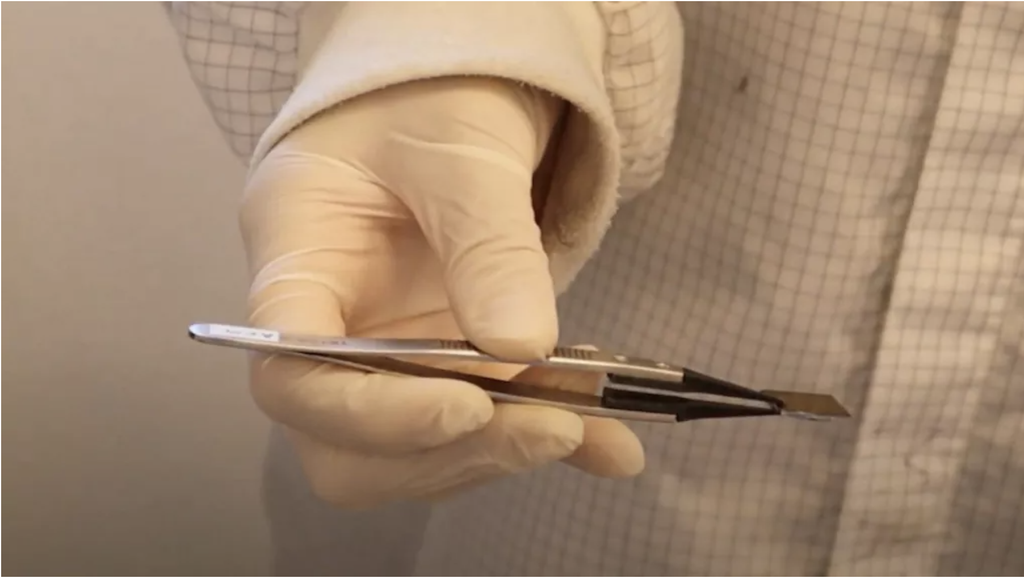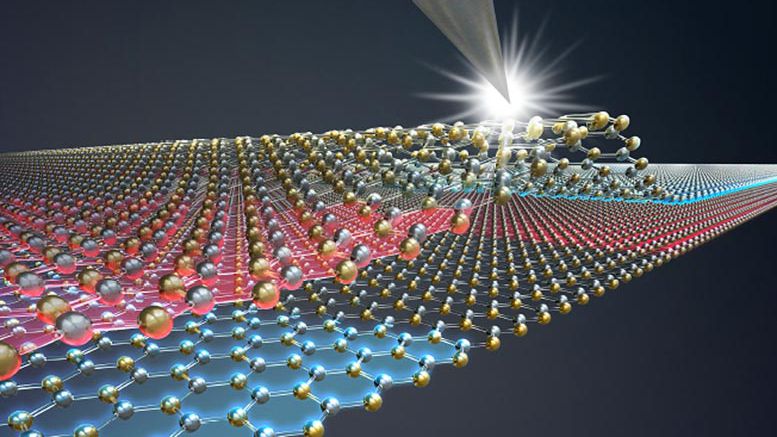Researchers at Tel Aviv University in Israel may have created the world’s thinnest electronic device. The chip is only two atoms thick and can be used in the future to store data and digital information in more efficient computers.
The equipment has only two layers, one boron and one nitrogen, arranged in a repeating hexagonal structure. By using a mechanical effect known as quantum tunneling, the atoms’ electrons are able to pass through the gap between the two layers, enabling digital encoding.
In high-end computers, processors contain tiny crystals with millions of atoms stacked in multiple layers. By transporting electrons through the gaps between these layers, the system is able to switch between the two binary states (0 and 1), forming the bit.
“In its natural three-dimensional state, the crystal is composed of a large number of layers placed on top of each other, rotated 180 degrees relative to their neighbors. Now, we are able to artificially stack the layers in a parallel configuration without rotation, which puts atoms of the same type in perfect overlap,” explains physicist Moshe Ben Shalom, co-author of the study.
quantum tunneling
In laboratory tests, the researchers observed that quantum tunneling allows electrons to pass through barriers previously considered insurmountable. This is because in quantum physics, particles that exist as waves traveling on one side also have some probability of being on the other side of a barrier.
This principle makes the electrons able to jump between the boron and nitrogen layers of the device. As these layers do not line up perfectly, slipping slightly off the center of each other, the loads from each are superimposed. This causes the negatively charged electrons to move in opposite directions, creating a small electronic polarization.

By adjusting the way one layer interacts with another, scientists have realized that the polarization can be reversed, shifting the device from one binary state to another. This characteristic is fundamental for the creation of new electronic equipment, capable of storing large amounts of data.
Lei de Moore
To famous Lei de Moore predicts that the number of transistors on a microchip tends to double every two years. But as manufacturers get closer to the chip build limits, that rule starts to slow down. According to specialists, the miniaturization of electronic components should reach the physical production barrier in a few years.
With this technology that uses just two layers of atoms, the researchers hope that microchip fabrication will gain a new impetus for the future, making it possible to create electronic devices that are faster, less dense and more energy-efficient.
“We hope that the miniaturization and inversion of the polarization of the system by sliding layers will improve the current equipment and, in addition, allow other original ways to control and store information in devices that will still be invented”, completes the doctoral student in physics Maayan Vizner Stern, lead author of the study.
Source: Tel Aviv University
Did you like this article?
Subscribe your email on Canaltech to receive daily updates with the latest news from the world of technology.
–
–
–


